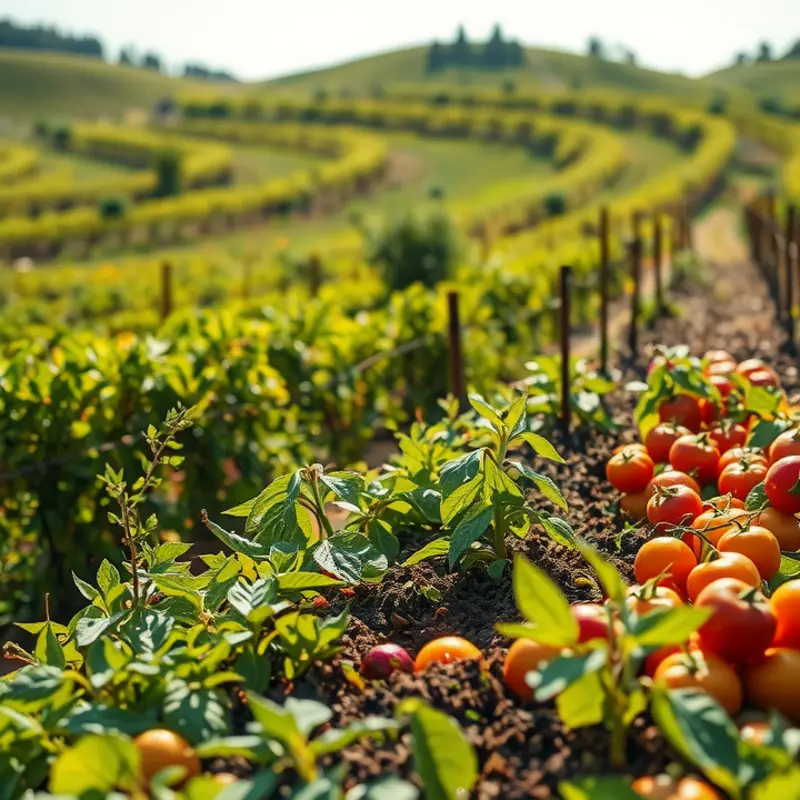Cross-contamination is a common issue in home kitchens that can lead to foodborne illnesses. By implementing practical strategies for food storage, waste reduction, and safe food management, you can ensure a healthier kitchen environment. This guide provides actionable tips to minimize the risk of cross-contamination while making the most of your food supplies.
Safe Storage Solutions

Understanding how to store food safely is essential in preventing cross-contamination. One of the most important aspects of food storage is keeping raw and ready-to-eat foods separate. This can significantly reduce the risk of harmful bacteria from raw foods transferring to cooked or ready-to-eat items. Start by designating specific areas in your fridge and pantry for raw and cooked items. For example, store raw meats on the lowest shelf of your fridge, where they cannot drip onto other foods. Above these, place your ready-to-eat items like fruits, vegetables, and cooked leftovers.
Labeling is another key component of effective storage. Clear, concise labels help in tracking food freshness and prevent the accidental consumption of expired items. Use permanent markers to write directly on freezer bags or masking tape, noting both the contents and the date of storage. This practice not only reduces waste but also ensures food safety by encouraging the use of the older items first, following the “first in, first out” principle.
Organizing your fridge can further minimize contamination risks. Consider categorizing items by type, such as dairy, produce, and meats. Each category should have its own spot in the fridge, reducing the need to move items around unnecessarily where cross-contamination might occur. For instance, storing similar items together in airtight containers prevents their odors and flavors from mixing, keeping food tasting as fresh as possible.
When it comes to containers, airtight options are unparalleled in keeping perishables fresh. They prevent exposure to air and moisture, essential factors in food spoilage. Frost buildup in your freezer can lead to freezer burn, and while it doesn’t make food unsafe, it degrades quality. You can use freezer paper for meats and vegetables or consider vacuum sealing to extend the shelf life.
Additionally, consider investing in tiered shelving or drawer dividers inside your fridge to create a more organized space. These tools enable better air circulation inside the fridge, assisting the appliance in maintaining a consistent temperature throughout. This is especially helpful for keeping items stored at the back or bottom just as fresh as those in front.
Storing your food properly, according to the tips mentioned, can have advantages beyond just safety. It aligns with efforts to reduce waste by keeping your groceries fresh longer, similar to the benefits experienced in adopting nutritious recipes such as Zucchini Noodles with Avocado Pesto, which relies on using fresh ingredients effectively. Such a practice not only promotes sustainability but also ensures your health, maximizing both your food budget and wellness.
Remember, safe storage is a simple yet powerful strategy in your kitchen arsenal. By integrating these organizational techniques and making thoughtful storage decisions, you’ll foster a healthier eating environment and contribute to a reduction in food waste.
Managing Preparation and Cooking

A key stage in food safety is managing preparation and cooking practices in your kitchen. While proper food storage is vital, the way you handle food during preparation can significantly affect the risk of cross-contamination. Let’s explore some strategies to ensure a safe cooking environment.
Separate Cutting Boards and Utensils
One fundamental approach is using separate cutting boards for different food groups. Designate one board for raw meats, another for vegetables, and a separate one for bread. This separation helps prevent bacteria from raw meats from contaminating other foods. Similarly, use different utensils for handling raw and cooked foods. This simple habit can vastly reduce the risk of transferring harmful organisms.
Dedicated Storage Containers
Utilizing dedicated storage containers for various food types can also curb cross-contamination. Store raw meat in sealed containers at the bottom of the fridge to prevent juices from dripping onto other foods. Label containers clearly for easy identification, promoting organized storage even during busy meal prep sessions. These practices not only enhance food safety but also contribute to better waste management by prolonging the freshness of ingredients.
Cooking Temperatures
Understanding and applying the correct cooking temperatures is essential in preventing foodborne illnesses. Ensure meat is cooked to the right temperature; for instance, poultry should reach at least 165°F (74°C). A food thermometer is a reliable tool to confirm this, preventing undercooked meals that might harbor bacteria.
Cleaning Techniques
Regular cleaning of kitchen surfaces, utensils, and appliances can significantly reduce contamination risks. Use hot, soapy water or approved kitchen sanitizers. Pay particular attention to areas used for preparing raw meats. Cleaning your kitchen tools and surfaces immediately after use can help maintain a hygiene standard that supports food safety strategies.
Smart Meal Prep Strategies
Incorporating smart meal prep strategies can enhance both safety and efficiency. Batch cooking during the weekend can minimize the number of times you need to handle raw foods, reducing possible contamination. Plan meals strategically to make use of ingredients that require similar preparation methods. For instance, if making a Mediterranean Chickpea Salad, you can prepare and store the ingredients separately until assembly, ensuring freshness and ease.
These strategies are not exhaustive, but implementing them can significantly elevate your kitchen’s hygiene standards. By taking small yet deliberate steps towards managing preparation and cooking, your kitchen environment will support healthy and safe food practices.
Final words
Maintaining food safety in your kitchen is vital for preventing illness and reducing waste. By following simple yet effective storage techniques and implementing safe preparation and cooking practices, you can significantly minimize the risk of cross-contamination. Remember, a clean and organized kitchen not only helps in preserving food quality but also enhances your cooking experience. Take these actionable tips to heart, and enjoy a healthier, more efficient kitchen at home.







